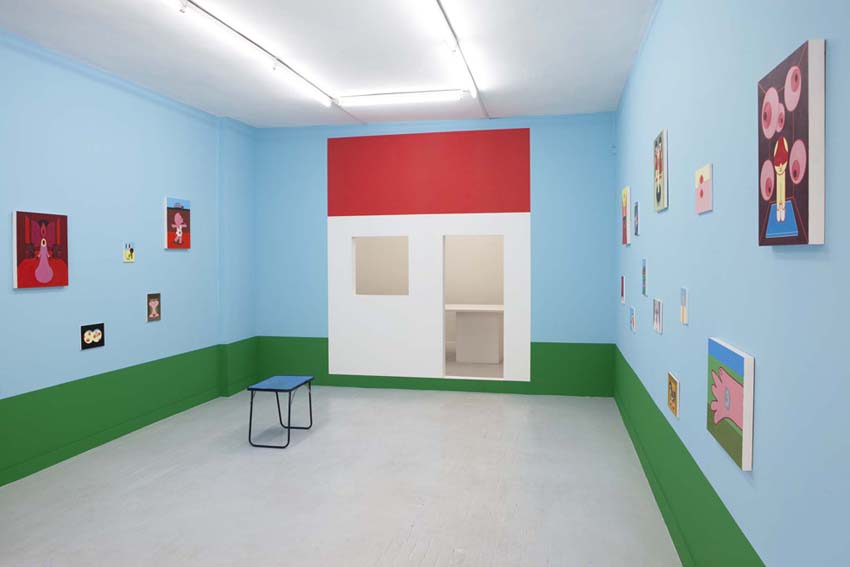Once more in gallery Anne Barrault, Guillaume Pinard takes the opportunity to go back to the primordial practice he had left for something else, and which finds its place again among the cycle of his inclinations : oil painting itself. For this new exhibition, he has given up the harsh black and white of his ghostly, fidgety figures, the compulsive trace, the immediate pleasure of charcoal, for an obviously free, colourful, physical, studied painting.

So goes the movement of his work. The line, the intention is built through process, practice, from soft lead to dry-point, from animation sequential calculus to brushwork. Here we have a multiple choice composition which must be organized : canvas, pigments, remnants, colours, so many elements to be mastered, against which you have to fight as well. You understand the roundabout way he took at the beginning, illustration and drawing being more reassuring.
Guillaume Pinard’s work and venture into the test of oil painting is based on childish aesthetics. He creates radiant, vivid, bright motifs. In a willingly schoolish way, he frames them in elementary, narrow perspectives. He singles them in a kind of container without wrapping, a box, open certainly not by chance, in order to reveal “Oh, sorry! Me, that is this, too!” their hidden nature. Whether they are a solar rabbit drinking the brew from a headless body, a proud well-hung horse, a virgin meaning fiercely to remain so, or a vase with balls, Guillaume Pinard’s figures reveal his obsession for clarity. His use of the codes of regressive drawing plays on this fixed idea. Accessible forms, simple colours, academic setting. With the subject as with the material, what is to be seen must be accepted, understood at once. Everything must be clear. Nothing must arouse interpretation. A horse with a hard-on is a happy horse, that is all. In the same way, oil painting, excluding apparent outlines – in the sense that it is understood as elborate, refined matter, or its opposite- is an oil painting, because it is in oils, that is all.
With Guillaume Pinard, an eminently interdisciplinary artist, the medium is expression. The stains inherent to painting show he is prone to consider practice, that is to say accordingly. Between his various forms of illustrations, writing which has resurfaced these last two years, painting would be a movement, the complementary expression of a process. A global, exhalirating process which vould reveal “oh, sorry! Me, that’s this too !” his different desires.
Frank G. Richard
